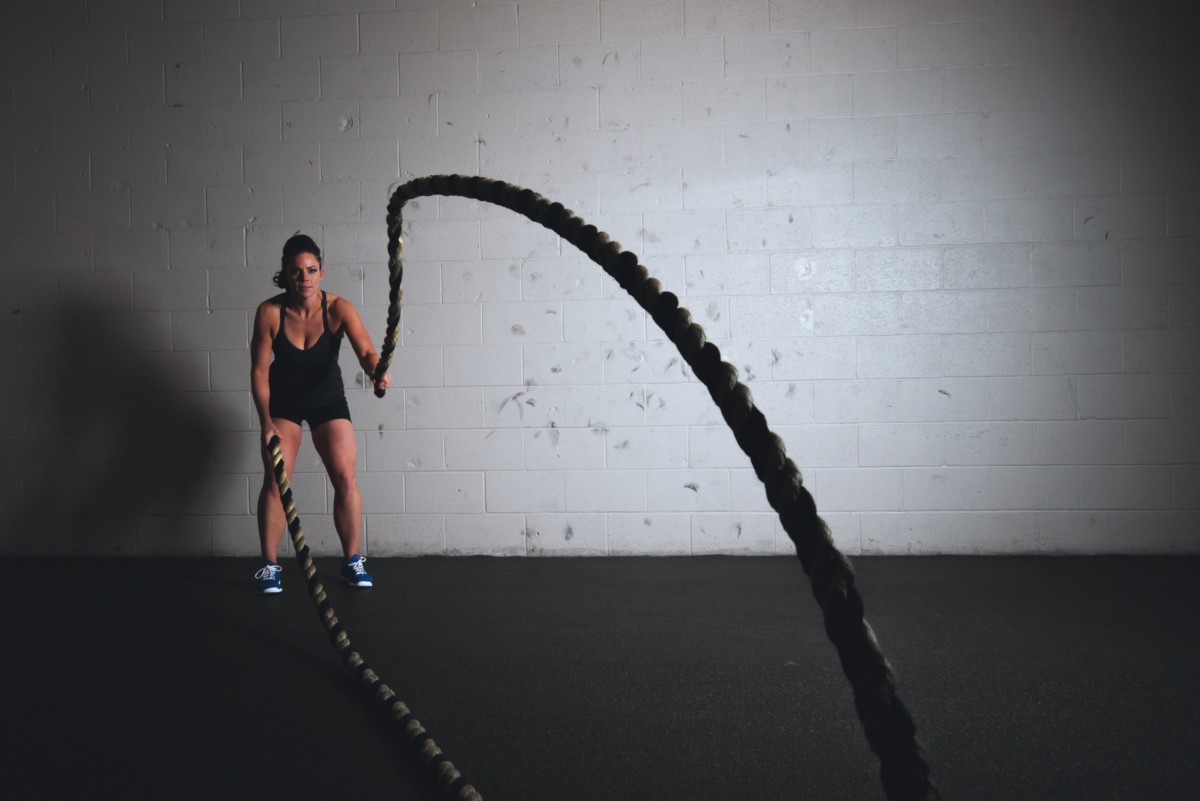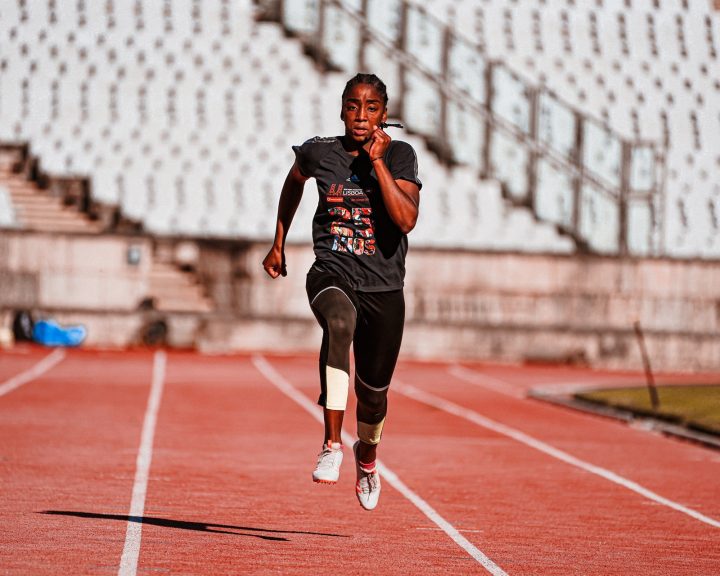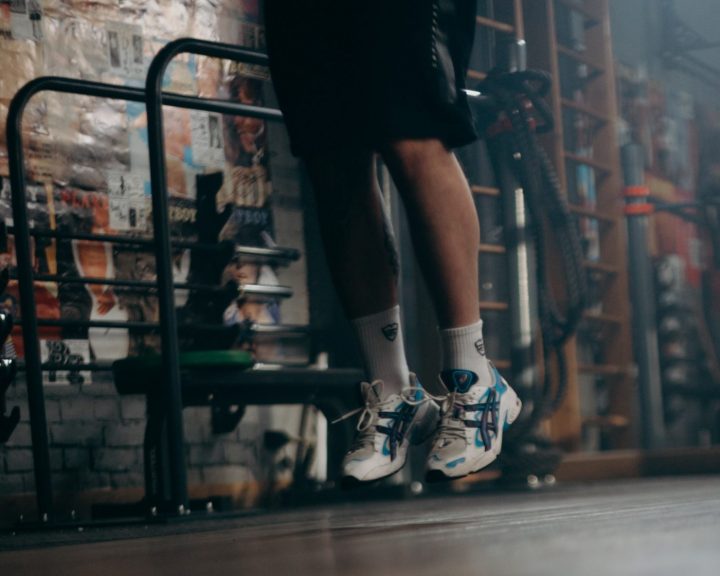The use of heavy ropes in the conditioning of athletes has become very popular over the last two decades. These are long, extra-thick, heavy ropes that are attached to a fixed point. The athlete performs a variety of exercises that are rhythmical in nature and that (in theory) work the majority of the muscles of the body. This makes them an ideal tool for metabolic conditioning, where the program needs to have a defined work to rest interval. In addition to those benefits, this is a fun exercise mode. After all, who wouldn’t enjoy slamming something against the ground really hard, over and over again?
There has been a paucity of research on this training mode, however. Over the last few years several studies have been done about them. Fountaine and Schmidt (2015) performed a study that found that a workout program with battle ropes had a training effect in “active college students” that was difficult enough to elicit a cardio-vascular training effect. Ratamess et al (2015) found that heavy rope exercises had a higher oxygen consumption and energy expenditure than free weight and body weight exercises.
In the Journal of Strength and Conditioning Research, Calatayud et al (2015) performed a study to examine the muscle activation of two types of heavy rope exercises; bilateral waves and unilateral waves. In this study, subjects performed three repetitions of bilateral (i.e. both arms) and three repetitions of unilateral waves. This, like in the previously mentioned Fountaine study, was a primarily upper body exercises (i.e. minimal lower body movement). The authors compared the muscle activity of the anterior deltoid, external oblique, lumbar erector spinae, and the gluteus medius. The authors found minimal difference in muscle activation except that the unilateral waves resulted in greater oblique activation and the bilateral waves resulted in somewhat (i.e. a difference, but not a statistically significant one) greater lumbar erector spinae activation.
There have been a great many “new” training tools introduced over the last few decades. Things like kettlebells, heavy/battle ropes, sandbags, tires, sleds, etc. While many of these have been around for a very long time, they’ve only recently gone mainstream in strength and conditioning. Many practitioners have been using these new training tools for a long time now, so it’s good to see research beginning to be done using the tools.
The challenge to the practitioner is that, with the research being in the beginning stages, it has not caught up to the practice of using the tools. For example, all of the studies mentioned have used non-athletes as subjects, which makes applying the results to athletes is problematic. In addition, the training protocols are significantly less challenging than what trained athletes would employ, which also makes the application of the study results challenging.
As a practitioner, there are several things that I like about heavy/battle ropes. First, they allow for a great deal of exercise variety. Second, if the exercises are performed properly they can be a total body exercise. This means using the legs and arms during exercises like the wave exercises, as opposed to making them upper body only. Third, if the exercises are total body then they will burn calories, develop endurance, and be a great tool for metabolic conditioning. Fourth, there’s not a lot of joint stress with this exercise, which is nice for us old, beat-up weightlifters. Finally, because the exercises are rhythmical in nature they lend themselves to being done for periods of time, which makes them ideal for metabolic conditioning.
I like to use this as part of my own metabolic conditioning workouts. Having said that, when done in a team sport setting I do have two concerns about this training tool. The first is the challenge with creating overload. Recall that overload is essential to continuing to enhance one’s fitness. The ropes are only so big and so heavy, so increasing their weight is problematic after a certain period of time. The volume can increase, but there comes a time when that is both unrealistic and is not training the desired qualities. So this is a concern, though to be fair not many people will reach this point in their conditioning program.
The second concern is that they require a lot of space and to have enough to use in a team setting is going to require an investment in terms of space and in terms of purchasing them ($50-$200 each). Now, as I’ve said elsewhere this can be offset somewhat by creating conditioning stations that athletes rotate through, for example: jump rope, heavy rope slams, kettlebell swings, core, lunges, bear crawls, sled, sprint – all this gives you enough to keep eight athletes busy at one time and then they can be rotated through each station. So it is doable, but it requires careful planning on the coach’s part.
Revised July 5, 2024
References:
Calatayud, J., Martin, F., Colado, J.C., Benitez, J.C., Jakobsen, M.D., and L.L. Andersen. (2015). Muscle activity during unilateral vs. bilateral battle rope exercises. Journal of Strength and Conditioning Research, 29(10), 2854-2859.
Fountaine, C.J. and Schmidt, B.J. (2015). Metabolic cost of rope training. Journal of Strength and Conditioning Research, 29(4), 889-893.
Ratamess, N.A., Rosenberg, J.G., Klei, S., Dougherty, B.M., Kang, J., Smith, C.R., Ross, R.E., and Faigenbaum, A.D. (2015). Comparison of the acute metabolic responses to traditional resistance, body-weight, and battling rope exercises. Journal of Strength and Conditioning Research, 29(1), 47-57.



